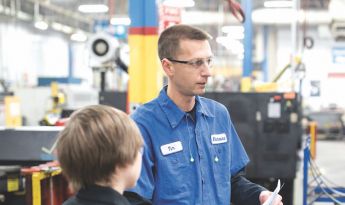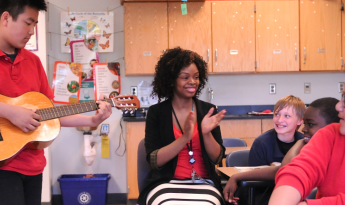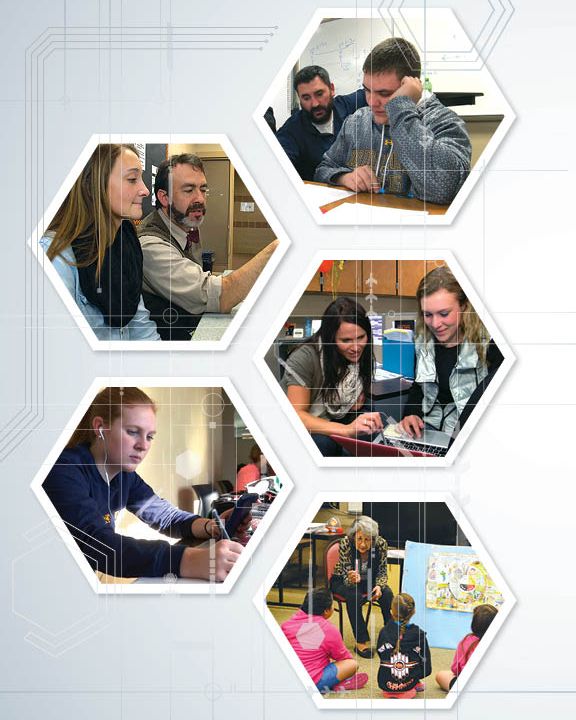
Clockwise from bottom left, photos courtesy of TIE Media Services (4), Hekia Meya.
In January 2015, the Bush Foundation put out a call for big ideas to positively impact postsecondary success for all students in Minnesota, North Dakota, South Dakota and the 23 Native nations that share the same geography.
The Foundation received more than 240 proposals from across the region, and as the staff reviewed the ideas, a theme began to emerge.
“We were struck by the number of ideas we received that were focused on ways to make education more relevant for students, in terms of how they learn, who they are and where they want to go,” says Education Portfolio Director Kayla Yang-Best. “It quickly became clear to us that there is not only a lot of energy around these ideas, but also an incredible opportunity to shape the future of instruction and learning throughout the region and across the country.”
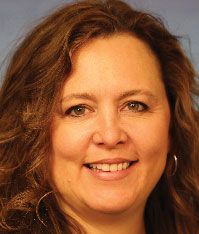
Julie Mathiesen, TIE executive director.
Instructional relevance
When it comes to education, the United States is stuck in an industrial-age model, says Julie Mathiesen (BF'03), executive director of Technology & Innovation in Education (TIE). In particular, the way students are taught hasn’t modified to keep up with the ever-changing world in which we live.
“The dominant approach to learning and instruction is roughly the same today as it was 150 years ago,” she explains. “While we often see business keeping up with those changes, we’ve seen less in education. We need to adjust to the times, to economies, to society.”
TIE aims to do just that by working with schools and communities to implement customized learning strategies in classrooms across South Dakota. Rather than forcing students through a one-size-fits-all experience, customized learning tailors instruction to the student’s unique learning style.
A division of Black Hills Special Services Cooperative, TIE has piloted customized learning in two South Dakota schools. Educators were introduced to new teaching methods and technologies that allowed them to break from the traditional lecture model of instruction and develop personalized learning plans. The pilot demonstrated that customized learning strategies can increase student engagement and their desire to learn.
The Bush Foundation recently announced it will invest $4 million over the next four years to help TIE bring customized learning to more schools throughout South Dakota.
Mathiesen, a 2003 Bush Fellow, says the investment will help more students better prepare for their future. “When students develop a sense of agency, they’re going to be much more successful.”
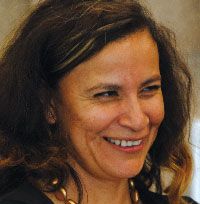
Sunshine Archambault Carlow, Standing rock tribe education manager.
Cultural relevance
A nonprofit language and culture advocacy group, the Lakota Language Consortium works with Standing Rock Sioux Tribe to provide cultural curriculum in the majority of the reservation’s schools. Together they formed the Lakota Summer Institute, an annual three-week language training at the local Sitting Bull College campus.
At its inception, the program had 22 participants, all of whom were language teachers. By 2010 there was an influx of participants from within the Standing Rock community, across the country, and even other countries coming to learn the Lakota and Dakota languages. That number has grown significantly according to the Tribe’s Education Manager Sunshine Archambault Carlow.
With a $1 million investment from the Bush Foundation, Standing Rock will expand the Lakota Summer Institute into a full-fledged year-round education program. The result is the Language Revitalization Program. The goal is to increase the number of fluent Lakota and Dakota speakers within and beyond the Standing Rock community, ultimately improving student success by increasing cultural awareness.
Carlow, a Native Nation Rebuilder from Cohort 7, says Standing Rock will also explore new teaching tools like recordings of fluent speakers, and will invest more time and energy into making Lakota and Dakota language learning easier for all interested learners. They will use advanced language-teaching technology and develop a comprehensive curriculum in Standing Rock schools, increasing the younger generation’s exposure to the language.
“You measure the health of a language by the number of children speakers,” says Carlow, adding that the Lakota and Dakota languages are largely lost among younger generations at Standing Rock. Her own language, for example, was not a part of her upbringing, so she never imagined that becoming fluent was an option. “We want to empower our people to know that you can learn it, and you can advocate for it,” she says.
Career relevance
Resting on the shores of the Mississippi River, Winona, Minn., is home to more than 100 manufacturers. With abundant jobs in diverse fields and cutting-edge technologies, the Minnesota Chamber of Commerce felt Winona was a natural location to pilot a new initiative to address workforce challenges that many employers face across the state.
"We see relevance in three ways: relevance in terms of how students learn, relevance in terms of where students come from, and relevance in terms of where students want to go."
Kayle Yang-Best, Bush Foundation education portfolio director
The chamber’s Business Education Networks program will help connect employers with high school and college students, as well as higher education and workforce training systems.
Laura Bordelon, the chamber’s vice president for advocacy, says introducing middle school, high school and college students to employers will create an incentive for them to complete certificate and degree programs in areas where there are meaningful employment options.
“We will put the employers right in the heart of conversations, so that they are communicating directly with students about the jobs they have available in their community and the skills needed for those jobs,” Bordelon explains.
With a $300,000 investment from the Bush Foundation, the chamber will be able to run the pilot for two years. Using what they learn from the Winona pilot, they hope to expand the program to other cities throughout the state.
“Manufacturers have a lot to offer, and they need workers,” Bordelon says. “The students and companies want to grow, the companies want to stay there, and we want to help them stay there.”
Education has been a priority for the Bush Foundation throughout its history. By focusing its investments on efforts to make education relevant to how students learn, who they are and what they aspire to do, the Foundation aims to build on that legacy and change the future of education for the better.
Three Dimensions of Relevance
The Bush Foundation's mission to create meaningful and engaging education systems breaks down into three branches, each as crucial as the next.
1. Instructional Relevance
How students learn.
The traditional instructional approach—batching kids by age and teaching them in the same way at the same pace—does not optimize for the different pace at which students learn and for the different ways that students learn best. We see opportunities to use alternative strategies and new technologies to better support every learner to reach their full potential.
2. Cultural Relevance
Who students are.
We know that students are more likely to persist and succeed in school when they feel like they belong and are valued. Every educational program has a culture—whether intentional or not. We see opportunities to make learning cultures more inviting and supportive of students from all backgrounds.
3. Career Relevance
Where students want to go.
Educational success requires taking the long view—picturing the value of 13 or 17 years of education in terms of career and life options. We see opportunities to help more students imagine a future career and provide tailored supports to get them where they want to go.
